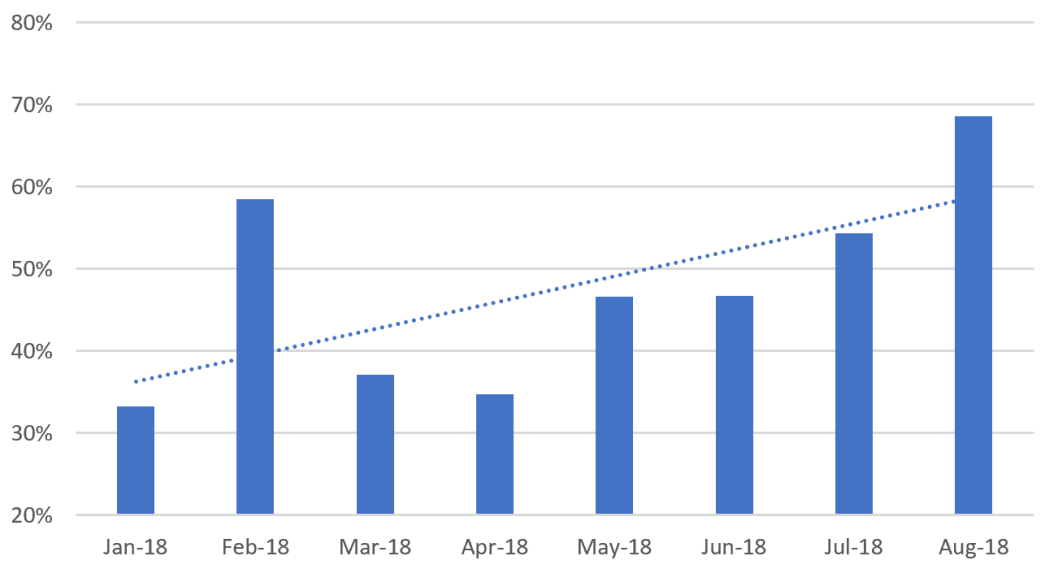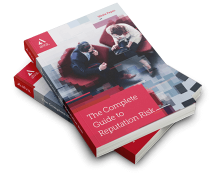CEO Reputation vs Corporate Reputation: The Elon Musk Car Crash
In 2016, alva produced a white paper examining the link between corporate reputation and the reputation of CEOs. Examining the examples of now-ousted Uber CEO Travis Kalanick and Tesla’s Elon Musk, the report found that companies whose reputation are driven by a strong, visible and vocal CEO are put at greater reputational risk: the reputation of the company is overly dependent and vulnerable to the actions of the CEO. Mature companies – such as Apple and Amazon – were shown to have a healthy dynamic between the reputation of the company and its figurehead, but ultimately the corporation itself was dominant.
Below, we will examine how Tesla and Elon Musk’s fortunes have since progressed and whether he has fallen prey to some of the traps that led to Travis Kalanick’s downfall.
Key takeaways:
- Tesla’s reputation is now primarily being driven by the actions of its CEO, Elon Musk
- An overly visible and outspoken CEO can be detrimental to the corporate reputation and remove a powerful weapon from communications’ arsenal
- Communications at founder-led businesses have a duty to develop a brand identity separate to that of the CEO in order to plan for the long-term future and mitigate potential reputational risk
alva’s CEO reputation white paper commended Elon Musk for establishing and promoting Tesla’s core brand values, such as global sustainable energy, alongside his own business philosophy. The alignment between the company’s values and the CEO’s own goals served to bolster the reputation of both, and for Musk’s personal “brand”, it resulted in less of a reputational hit when Tesla reported fatalities when testing its autopilot cars. The below graph, taken from the white paper, clearly shows how the reputations of both CEO and company were not co-dependent:
Figure i: 60-Day rolling average sentiment trend for Tesla and Elon Musk

Since then much has changed.
The success or failure of Tesla – and its reputation – has become synonymous with the success or failure of Elon Musk. The outspoken, boisterous and enigmatic leader has amassed a cult-like following who believe he can do no wrong. His ventures into space with SpaceX, his desire to revolutionize urban transportation with hyperloops, and the production of 20,000 limited edition flamethrowers (amusingly named “The Boring Company”) have all simultaneously ramped up media interest in Elon Musk, and served as temporary deflections from the goings-on at Tesla. The graph below shows what percentage of Tesla-related content also referred to Elon Musk since the turn of the year. With the exception of February (when Musk launched a Tesla Roadster into space), it shows a steady increase in mentions of the CEO within Tesla’s overall pool of data.
Figure ii: Graph showing the percentage of Tesla content each month to also mention Elon Musk

2018 has been difficult for both the company and its founder CEO. In Q1 it posted a record loss of $709.6m, it has struggled to meet its own production targets and has been the victim of choice for Wall Street’s short-sellers. Perhaps as a result of the pressure placed on him by the above, Musk has increasingly turned to social media to vent his frustrations: he criticised analysts on an earnings call as “bone-headed” for asking rudimentary questions about the company’s numbers, he launched a scathing attack on the press following media criticism of Tesla’s performance, and he callously referred to a British diver as a “pedo” after the latter rejected his help rescuing the boys stuck in a cave in Thailand. These outbursts have led to serious questions about both his temperament and leadership of a company valued at around $50bn.
From a reputation standpoint, these comments have undone much of the earlier good work done by Tesla and Musk in building a brand whose values align with those of its leader. The goodwill buffer the company’s reputation had previously established has been eroded away, and the actions of the CEO are having a now immediate impact on Tesla’s corporate reputation, as the below graph shows.
Figure iii: 60-Day rolling average sentiment trend for Tesla and Elon Musk

In companies with a healthy relationship between CEO and corporate reputation, alva’s data shows a delay between the actions of the executive and tangible impact on the reputation of the company. This delay gives the communications function a window of opportunity to mitigate any potential risk to the overall reputation of the corporation – something that Tesla will now go without.
A notable similarity between the Tesla and Uber cases lies in their respective leaders’ (at the time) willingness to bend the rules as they see fit. At Uber, Travis Kalanick’s high-risk behavior and disregard for rules and regulations ended up shaping the company’s brand values. His actions are partly to blame for the 400 plus lawsuits filed against Uber, many of which the company is still contesting today. At Tesla, Musk took an unprecedented measure by tweeting that he was considering taking the company private at a share price of $420, with “funding secured”. Some allege that he was seeking to squeeze those shorting his company out of their positions during a moment of frustration. He is now being investigated by the SEC and sued by a considerable number of Wall Street firms, with one going as far as to say that Musk is “likely” to go to jail.
The most recent events have compounded these issues further.
In August’s “emotional” interview with the New York Times, Musk admitted that this year had been one of the most stressful of his life, referencing multiple consecutive days spent at the Tesla factory and struggling to attend his brother’s wedding. Tesla’s shares dropped 9% when the market opened that day and prominent publications openly argued that Musk needed to temporarily step aside from running the company. In early September, Musk “doubled down” on his previous libelous claims on the British cave diver, referring to him in unsavory terms in an email that was made public, adding fuel to a fire that many had already started to move on from. Finally, on the day that Tesla’s chief accountant and head of HR unexpectedly quit the business, Musk appeared on the Joe Rogan podcast. The media jumped on the opportunity to re-enforce the perception of a maverick that is out of control, and Tesla’s shares tanked up to 8% during trading.
Conclusions:
Many of Tesla’s recent problems extend from a modern yet ultimately flawed communications strategy. Leveraging the executive voice can be used as a powerful tool for the communications function when used sparingly and strategically. It can mitigate negativity around poor financial results, it can add credibility and weight to statements around brand values. At Tesla, a combination of an overly visible CEO and one whose Twitter postings have led to questions around his temperament has been detrimental to the company’s reputation. Communications has lost control of one of its most useful strategic tools.
As the founder of Tesla, Musk has made the company’s success personal to the point where his own wellbeing is now driving that of the whole company. This is neither healthy nor desirable for a mature organization. Whilst a passionate, charismatic leader can pay dividends in terms of rapid growth and publicity for companies, particularly in their infancy (as per Kalanick at Uber), inadequate planning for life after the founder moves on leaves a company’s reputation vulnerable to risk and volatility. It’s currently difficult to picture a Tesla without Elon Musk at the helm.
Whether Musk takes time off from running the company or not, Tesla would do well to remind its stakeholders of what it stands for as a corporation, refocus media attention on the company itself, its fantastic product and vision, and not just its maverick leader.
Footnote
*alva algorithm calculates sentiment scores out of 10, where a score of 5.50 is considered neutral. The algorithm takes into account the volume, influence, prominence and relevance of real-time mentions form 80,000+ news sources, more than 3m blogs and forums, and 100+ social networks
Be part of the
Stakeholder Intelligence community











